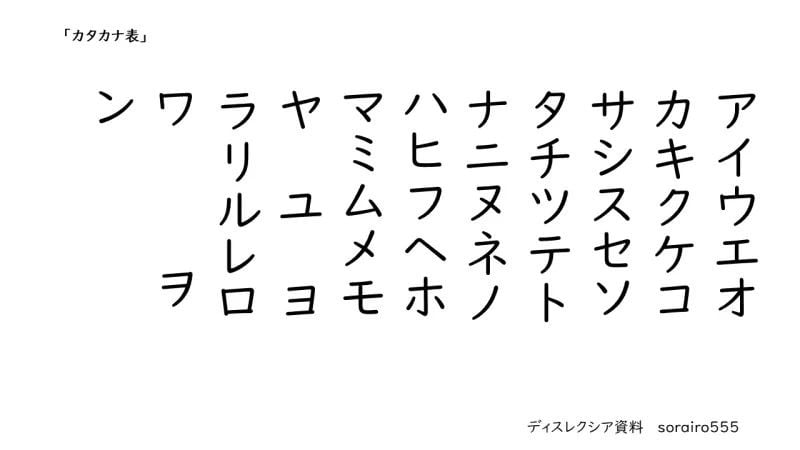Have you ever wondered what the letter "L" looks like in Japanese? This letter is usually represented by the "ル" family of hiragana. Contrary to what some people think, the Japanese language doesn't natively have the letter "L", so they swap the L for the "R".
In the Japanese alphabet, there is no letter that corresponds to the "L" sound. This is because Japanese, which uses the hiragana, katakana and kanji writing systems, doesn't have a sound that exactly represents the "L".
To adapt foreign words that contain "L", the Japanese generally replace this sound with "R", which is the closest sound in the Japanese language.
In this article, we'll examine how the "L" sound is integrated into Japanese, phonetic adaptation, examples of modified foreign terms, and other curiosities related to the language.

Table of Content
The Letter "L" in Japanese
In Japanese, it's not just the katakana "ル" that is used to represent the "L" sound in foreign words; the entire kana family of the "R" line (ラ行) is used for this adaptation. The Japanese syllabary is made up of syllables, not isolated sounds as in some other languages. This means that each kana represents a combination of consonant + vowel, and not just a single consonant sound.
For example, to adapt foreign words with the "L" sound, the Japanese use kana like "ラ" (ra), "リ" (ri), "ル" (ru), "レ" (re), and "ロ" (ro), replacing the "L" with the "R". This adaptation is necessary because Japanese has no isolated sounds equivalent to the "L", and the syllabic structure of the language requires these sounds to be integrated within the existing phonetic rules. This is why a word like "Light" becomes "ライト" (Raito), using "ラ行" to imitate the "L" sound.
Converting "L" to "R"
In general, the transformation of "L" syllables in Japanese works as follows:
- LA > RA (ラ)
- LI > RI (リ)
- LU > RU (ル)
- LE > RE (レ)
- LO > RO (ロ)
- L > RU (ル)
The pronunciation of "L" or "R" in Japanese
The pronunciation of the Japanese "R" is an intermediate sound between "L" and "R". It is produced with the tongue lightly touching the roof of the mouth, near the front teeth, similar to the sound of a slightly curled "d" or "l".
This pronunciation is softer and less vibrant than the Portuguese "R". For example, in words like "ラーメン" (Rāmen), the pronunciation of "ラ" is something between "ra" and "la", which may sound different to speakers of languages that clearly distinguish between the "R" and "L" sounds.

Words with "L" in Japanese
The best way to understand the letter "L" in Japanese is with examples of foreign words that are written with "L". Let's see how these words have been adapted to Japanese writing:
- エレベーター (Erebētā) - Elevator
- コントロール (Kontorōru) - Control
- バレーボール (Barēbōru) - Volleyball
- フィルム (Firumu) - Film
- ゴール (Gōru) - Goal
- パネル (Paneru) - Panel
- オリジナル (Orijinaru) - Original
- エレクトリック (Erekutorikku) - Electric
- ガール (Gāru) - Girl
- ラベル (Raberu) - Label
- メタル (Metaru) - Metal
- モジュール (Mojūru) - Module
Most of the words above have been derived from English, note that the letter "L" has been replaced by the katakana "ル".

Japanese names with L
Another way of understanding how to adapt the letter "L" into Japanese is by adapting names. Let's take a look at some foreign names with "L" written in Japanese:
- レオナルド (Reonarudo) - Leonardo
- エリザベス (Erizabesu) - Elizabeth
- アレックス (Arekkusu) - Alex
- ルーカス (Rūkasu) - Lucas
- ミカエラ (Mikaera) - Michaela
- カルロス (Karurosu) - Carlos
- アリス (Arisu) - Alice
- オリバー (Oribā) - Oliver
- ラウラ (Raura) - Laura
- ダニエル (Danieru) - Daniel
- ローレンス (Rōrensu) - Lawrence
- サミュエル (Samyueru) - Samuel
- ヘレン (Heren) - Helen
- ローラ (Rōra) - Lola
- ガブリエル (Gaburieru) - Gabriel
FAQ - Frequently Asked Questions
Why is there no letter "L" in Japanese?
In the Japanese writing system, there is no letter equivalent to "L" because the Japanese language uses syllables rather than single letters. The closest sound to "L" in Japanese is represented by the syllable 'ra', which can vary in pronunciation between 'r' and 'l' depending on the context.
Is it difficult for the Japanese to learn how to pronounce the "L"?
Yes, many Japanese find it difficult when trying to pronounce "L", especially as the sound is not part of the Japanese phonetic system. As the 'L' sound doesn't exist in the native language, many Japanese substitute the 'L' for the 'R' when speaking foreign words.
Are there other letters that don't exist in Japanese either?
Yes, apart from "L", other sounds like 'V' and 'F' don't have direct equivalents in Japanese either. For example, the 'V' sound is usually replaced by 'B', and the 'F' sound can be adapted to a sound close to 'fu'.
How do the Japanese learn foreign words with an "L"?
Japanese children generally learn to deal with foreign words that have an 'L' in them through practice and continuous exposure to the foreign language, especially English. In schools, teachers teach the difference between 'L' and 'R' using examples and pronunciation activities, although the distinction remains a challenge for many.
Is it common to see foreign words in everyday Japanese?
Yes, it's very common to see foreign words, especially from English, in everyday Japanese. These words are often adapted to the Japanese phonetic system and used in modern contexts, from technology to fashion and food.
I hope this article has answered all your questions about the letter "L" in Japanese! If you liked it, don't forget to share it and get to know our Suki Desu Japanese course.
